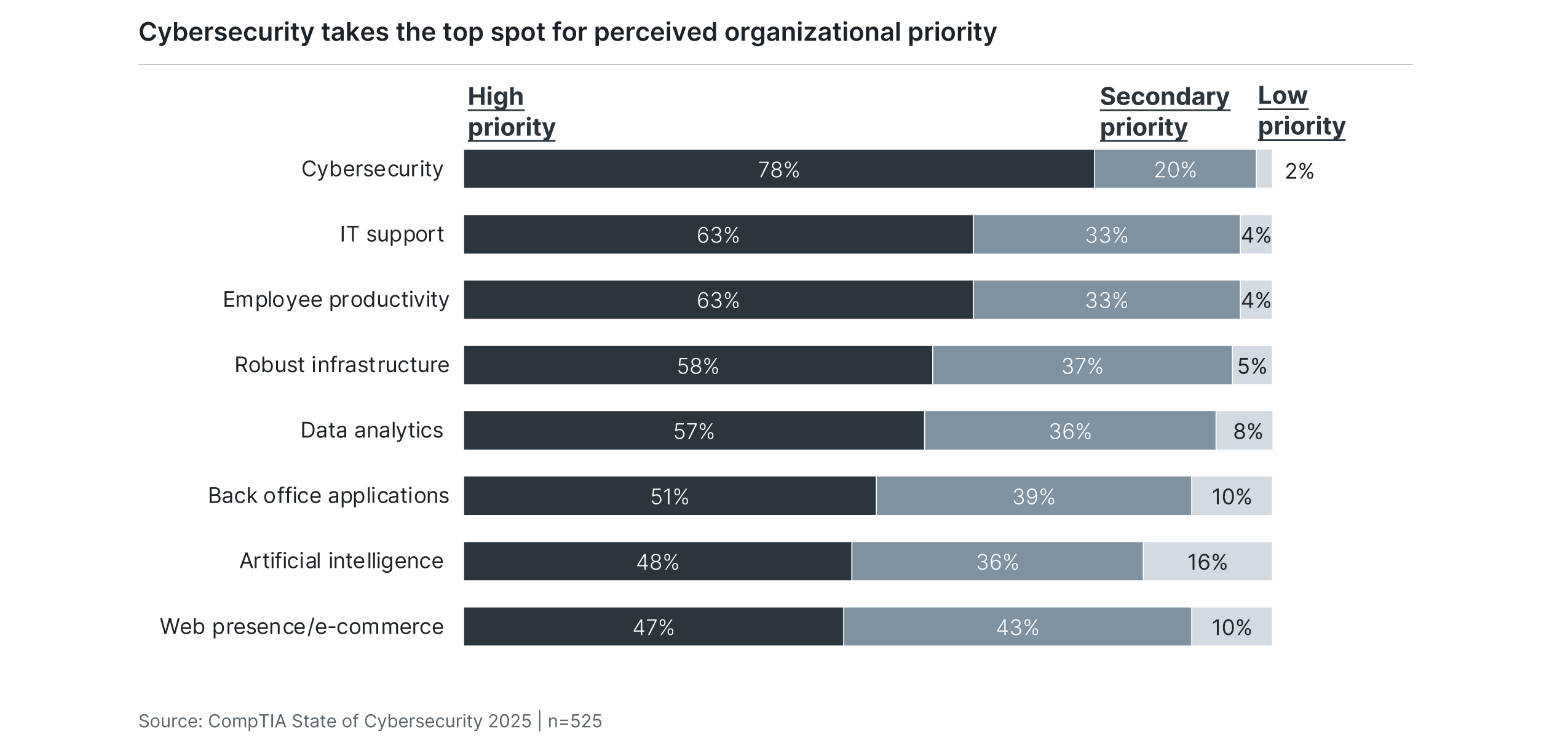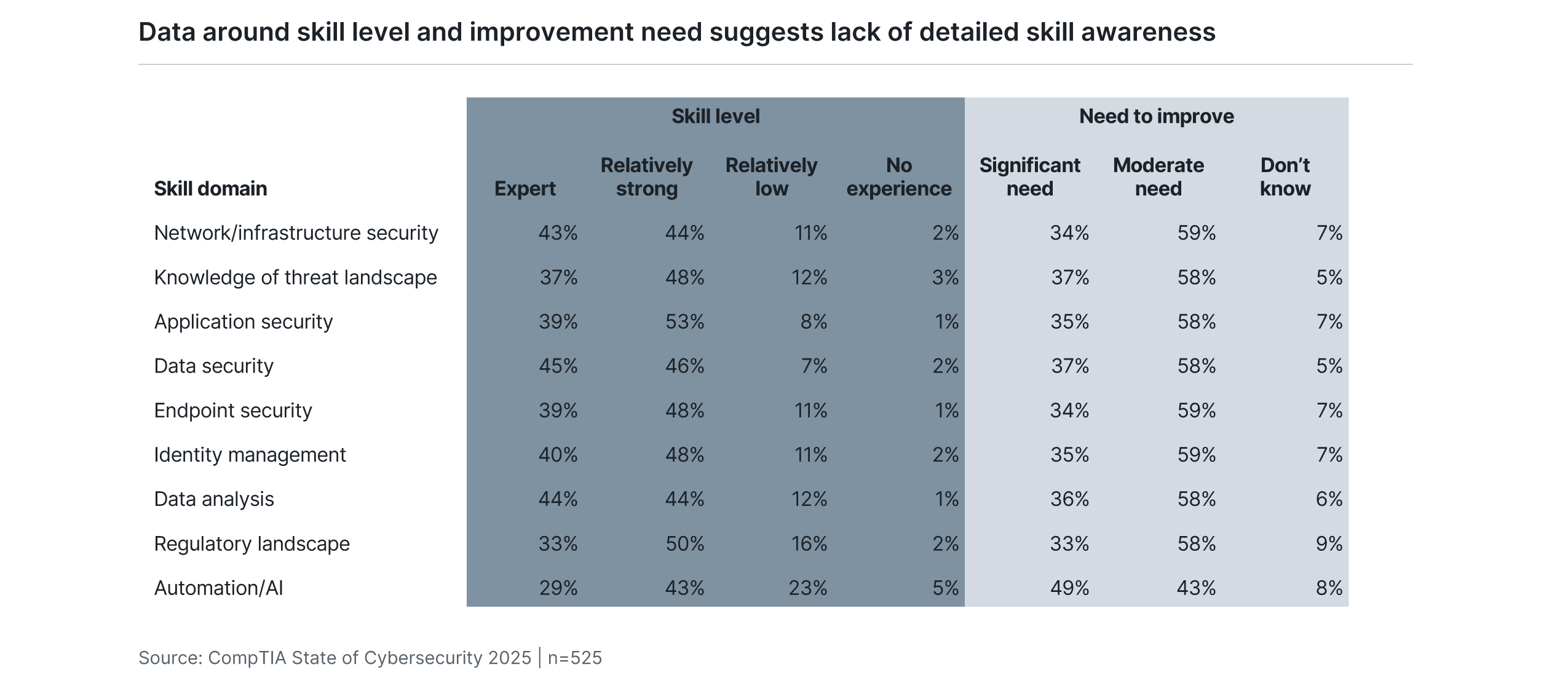Ultimate Cybersecurity Roadmap: How Businesses Can Navigate Evolving Threats
Cybersecurity is no longer just an IT concern—it’s a business imperative. In a CompTIA Enterprise webinar with Reanna Schultz, IT Security Team Lead at Garmin, we explored emerging cybersecurity trends, the evolving threat landscape, skill gaps, and the dual role of AI as both a tool and a risk. Understanding how to build a strong cybersecurity strategy is essential for every organization. Here’s what modern businesses need to know to safeguard sensitive information, stay compliant, and cultivate in-house expertise.
Why cybersecurity is a business imperative
Recent cybersecurity trends confirm that building robust cybersecurity defenses is no longer optional, it's critical. A well-defined cybersecurity certification path and continuous employee training have become critical for organizations to safeguard data and maintain business operations. However, many organizations cite budget constraints and resource challenges as major barriers. According to our 2024 State of Cybersecurity report, 36% of respondents struggle with budget limitations that prevent them from fully executing their cybersecurity strategies.
Overcoming challenges in modern cybersecurity practices
Key cybersecurity challenges
Many companies are adapting to a dynamic cybersecurity environment. Traditional "set it and forget it" security models are not enough to counter advanced cyber threats. Businesses must proactively update their cybersecurity certification roadmap and invest in cybersecurity training to keep pace with industry changes. Integrating technologies like AI in cybersecurity helps organizations detect and respond to threats faster but requires ongoing employee education to maximize benefits.
Closing the skill gap with cybersecurity certifications
Why upskilling matters
Skill gaps pose a serious risk to cybersecurity readiness. Organizations benefit from supporting their teams to earn relevant credentials—such as CompTIA Security+, or CompTIA CySA+, to ensure an agile, knowledgeable defense against cyber attacks. Ongoing cybersecurity certification training not only minimizes risk but also improves retention and operational efficiency.
Embracing AI and emerging cybersecurity technologies
Dual role of AI in cybersecurity
Artificial intelligence (AI) is transforming how businesses approach their cybersecurity roadmap. AI-driven tools enhance security operations, automate threat detection, and simplify compliance. At the same time, cybercriminals exploit AI to launch more sophisticated attacks. To stay ahead, organizations must continuously update their skills and adopt emerging cybersecurity best practices.
Top trends impacting the cybersecurity landscape:
- Generative AI threats
- Multi-vector cyber attacks
- Expanded compliance requirements (DOD 8140, NIST NICE
Framework) - Greater need for certified cybersecurity analysts
- Nation-state cyber threats
Community collaboration and continuous learning
Collaboration is vital in the cybersecurity profession. Participating in industry communities, attending cybersecurity training classes, and earning certifications (like those from CompTIA) help professionals stay sharp and informed. Continuous learning is the foundation of a strong cybersecurity roadmap, ensuring professionals can predict, identify, and mitigate threats efficiently.
What is a cybersecurity roadmap?
A cybersecurity roadmap is a strategic plan outlining an organization's journey to enhanced cyber defense, including threat assessment, skills development, certification paths, technology adoption, and community engagement. By following a comprehensive cybersecurity roadmap, businesses can build resilient defenses that grow with the threat landscape.
Build your cybersecurity roadmap with confidence
Today’s cybersecurity landscape demands ongoing vigilance, skill development, and strategic investment. Stay ahead of the latest cyber threats and trends by establishing a clear cybersecurity certification path for your team and encouraging continuous education through CompTIA and industry partners.
Download 2024 State of Cybersecurity report and contact our team today to discuss how we can help you upskill your cybersecurity team and address your business needs!

